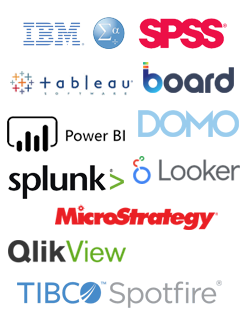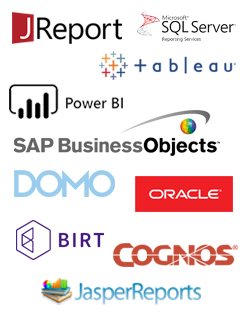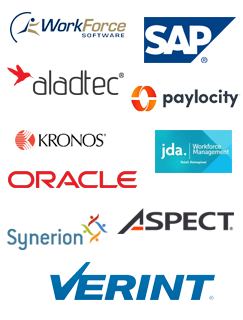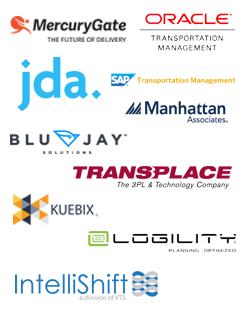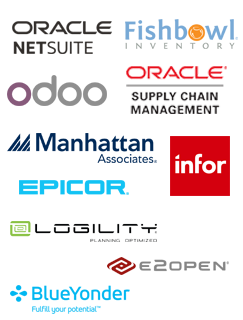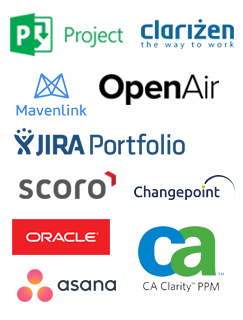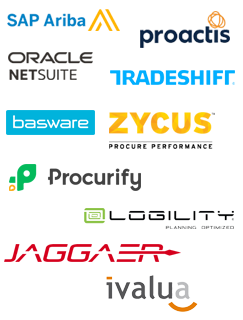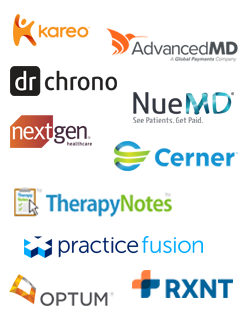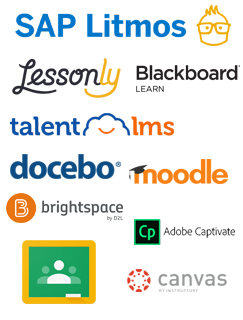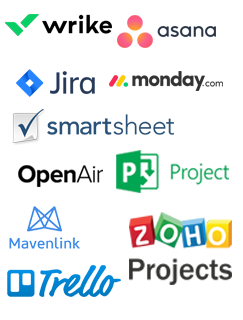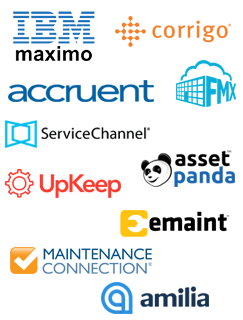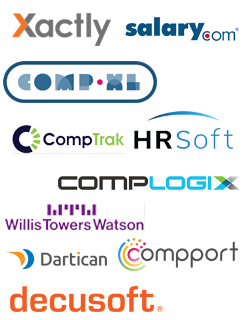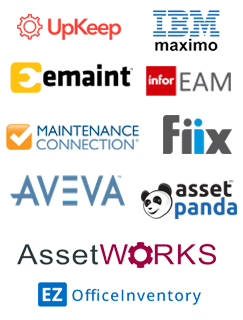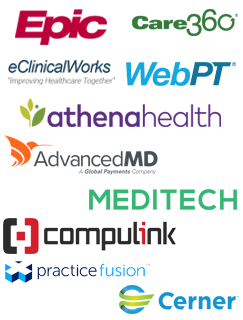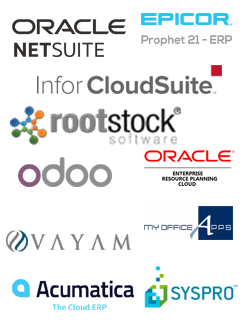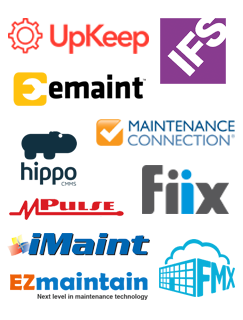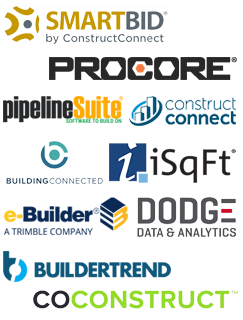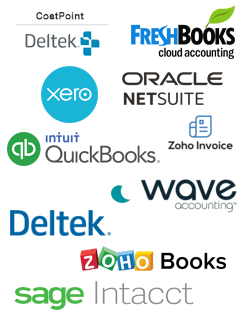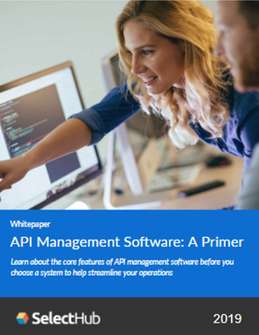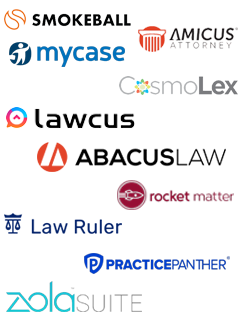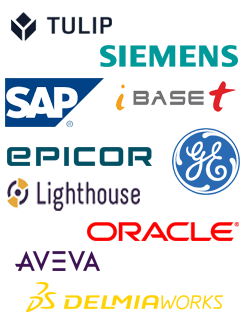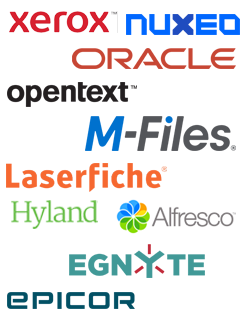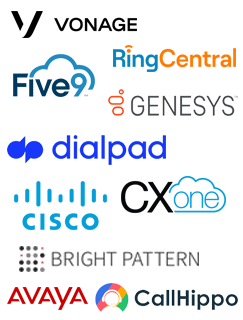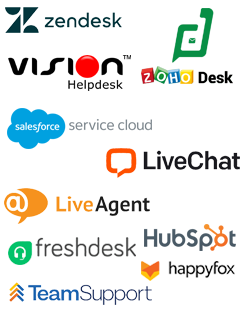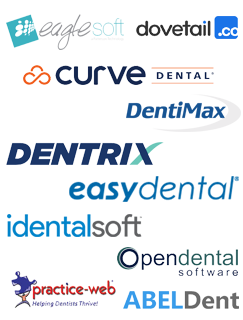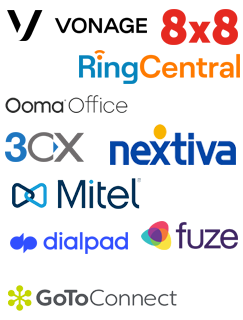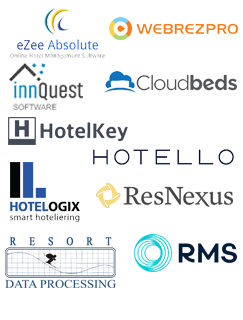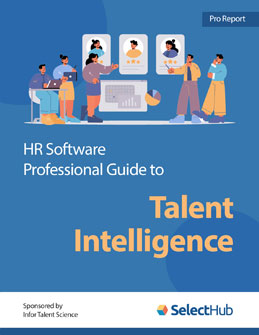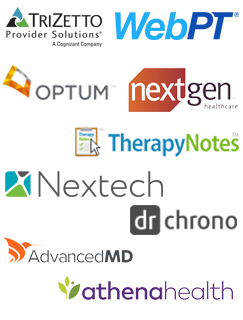Would you believe that over 100,000 business analytics jobs were posted in the U.S. as of Feb. 2023? As new blood fills the industry and demand for BI skills skyrockets, understanding business analytics vs. data analytics is crucial.
This article breaks it down with the associated roles, courses and certifications. Plus, it has information for software buyers. Which tool should you choose?
Compare Top Business Analytics Software Leaders
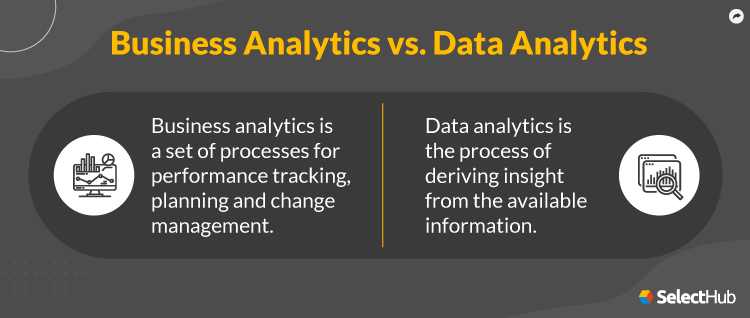
Article Roadmap
- What Is Data Analytics?
- What Does a Data Analyst Do?
- What Is Business Analytics?
- What Does a Business Analyst Do?
- Software Tools
- Courses and Certifications
- FAQs
- Next Steps
What Is Data Analytics?
Data analytics is the process of deriving insight from the available information. When it’s business-related, we call the approach business analytics.
Depending on how we use the derived information, we refer to data analytics differently — as descriptive, predictive or prescriptive analytics. Here’s an example to help you understand these terms.

SQL knowledge helps build machine learning models. Source
There’s a drop in subscriptions to your mobile app. How bad is it for business, and what can you do about it?
Descriptive analytics is a set of techniques for analyzing the data you have. The number of app downloads, recorded user interactions, error messages and user surveys can tell you what’s happening.
Predictive analytics is a branch of data science for forecasting future outcomes by applying machine learning and statistical modeling.
Given the current information, you can anticipate user behavior using churn analysis, user segmentation and trends forecasting.
Prescriptive analytics goes beyond predictions to help manage the outcomes. You’ve seen it in action.
As a preferred customer, your mobile app offers credit card upgrades and discounted shopping offers. A recommendation engine drives these personalized offers based on your usage history.
The same recommendation engine can suggest marketing channels to attract more customers. You can play around with it to learn how to improve the sign-up process.
We’ll discuss the data analytics vs. business analytics comparison in terms of the related roles.
What Does a Data Analyst Do?
Here’s a sample of a job description for a data analyst.
- Collect user survey data and present the findings through data visualization tools.
- Collaborate with business owners to define needs, oversee analytics procedures and interpret the outcomes.
- Detect potential areas for enhancement by monitoring systems and processes.
- Convert business inquiries into technical specifications.
- Address client queries by gathering and scrutinizing data from diverse sources.
- Establish data integrity measures.
- Assess and analyze data to inform business strategy.
A data analyst performs all information-related organizational tasks and drives its data culture.
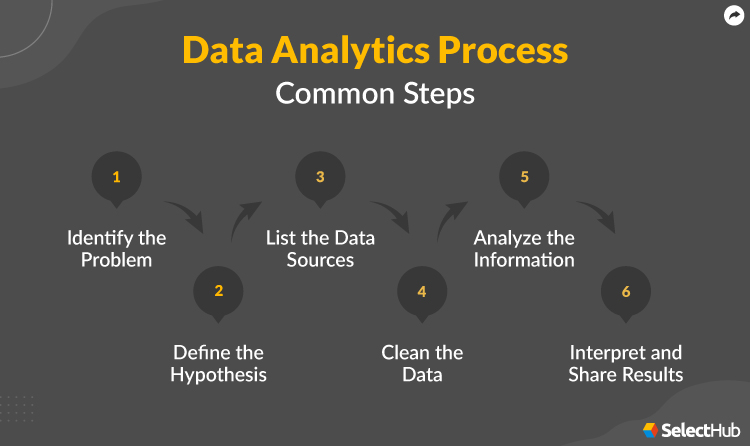
Data analysis requires problem-solving through hypothesis testing. Here’s how a data analyst approaches business questions.
- Define the questions that need answering and determine the hypothesis.
In the above example of the mobile app, the problem statement is — “Subscriber count is dropping.” One hypothesis could be — “Can we boost subscriptions by providing the Forgot Password option?”
- Convert the hypothesis into technical requirements.
- Determine the data sources and how you’ll source the information.
- Clean the data manually to remove duplicate, anomalous and incomplete datasets.
- Analyze the information.
- Interpret and share the results with stakeholders.
Compare Top Business Analytics Software Leaders
What Is Business Analytics?
Business analytics is a set of processes for performance tracking, planning and change management using data analysis. It ties together data and operations to support your business today and in the long term.

Gantt charts are popular change management tools. Source
The business analytics vs. data analytics comparison captures your interest because they are interlinked — business analytics is a subset of data analytics.
What Does a Business Analyst Do?
While a data analyst acts as a bridge between business and analytics professionals, a business analyst is the point of contact between engineering, analytics and business teams.

A business analyst’s role involves the following responsibilities.
- Gather the requirements and interpret them in business terms using mockups and wireframes.
- Lay down the goals in consultation with business and data teams.
- Define the scope — which are and aren’t the deliverables?
- Create user acceptance tests (UATs).
- Produce and maintain up-to-date project documentation.
- Convey the results to the business owner and client after deployment and UAT.
- Analyze the outcome.
Returning to the mobile app example, how different is the data analytics vs. business analytics approach?
- As a business analyst, you’ll suggest ways to boost subscriptions.
- Is there a particular time of the day when the abandonment rate is high? Or is it a latency or responsiveness issue?
- After introducing the changes, you’ll compare before-and-after subscription patterns and work to improve the user experience.
Software Tools
There’s a surge in cloud business solutions for industry verticals after the COVID-19 pandemic. The need for real-time customer analytics drives the demand for data visualization, machine learning and natural language processing.
Buyers are spoilt for choice. Mordor Intelligence predicts the business analytics software market will grow to $130.95 billion by 2028.
The following solutions support these two disciplines.
- Data analytics platforms
- Big data analytics tools
- Custom reporting software
- Data cleaning tools
- Data discovery tools
- HR analytics software
- Documentation platforms
- Project management tools
- Data mining tools
- Statistical software
- Predictive analytics platforms
Besides Power BI and Tableau, SAP Business One, Oracle E-Business Suite Applications and SAP Business Technology Platform are examples of business analytics systems.
As a student, learning all these platforms can be daunting. Python, SQL, data warehousing and Excel skills should help you scale, irrespective of your company’s platform.
Features To Consider
Regarding business analytics vs. data analytics software, platform features are top of the list. Advanced analytics solutions have data exploration, flexibility to connect to new sources and Python compatibility.

Despite visual query builders, SQL knowledge is an asset. Source
These are some features to consider.
- Data management
- Custom connectors
- Rich visualization library
- Python-R integrations
- A robust query editor
- Predictive analytics
- Geospatial functions and calculations
Machine learning drives advanced analytics, natural language processing and automation. Knowledge of statistical functions is a must to learn predictive modeling techniques.
Free, Paid and Open-Source Tools
Some open-source software solutions are free, and you have a good deal if they check all the boxes in your requirements checklist. Open source code is reliable and allows customization and integration with other platforms.
But not all free software applications are open source, so check the fine print carefully. The sky’s the limit with paid tools if you have the budget. Free trials are an excellent way to test-run the software before deciding.
Deployment Modes
The best data analytics solutions are available locally and in the cloud. A hybrid cloud deployment model is increasingly popular, combining private and public clouds.
The vendor allows data confidentiality while hosting the application on their servers. Examples are Power BI, Tableau, Oracle and SAP business analytics solutions.
Compare Top Business Analytics Software Leaders
Courses and Certifications
Online courses offer self-paced learning in the comfort of your home at an affordable fee.
Data Analytics
Technical specialization in mathematics, science and statistics is essential to qualify as a data analyst. What else do you need?
- Basic programming knowledge in Python, R, SQL and spreadsheets
- Good understanding of reporting packages and data modeling skills
- Proficiency in business intelligence and data visualization tools like Tableau, Looker and Microsoft Power BI
- Machine learning skills, including linear algebra and calculus for data preprocessing, transformation and model analysis
- An analytical mindset with problem-solving skills and attention to detail
Free Courses
Paid Certifications
- Data Analytics Classes NYC: Hands-on Courses and Corporate Training in Data Analytics
- Data Science Prep Course
- Data Analytics Bootcamp Online Part-Time | TripleTen
- Master of Science (MSc) in Applied Computing at the University of Toronto
YouTube is an excellent resource for free tutorials.
Business Analytics
Business analysts major in supply chain management, information systems, sports analytics, finance, project management and business administration.
Desirable skills include the following.
- Excellent communication.
- Working knowledge of SQL and Python.
- Expertise in Google Suite, Trello, Jira, Microsoft Word, Excel and Powerpoint.
- Reporting and technical documentation experience.
- Time management and organizational skills.
- Critical thinking and initiative.
Online Courses
College Degrees
- Program: Business Analytics & Information Management, BS – Purdue University
- Program: Business Analytics, B.S.B.A. – University of North Carolina at Charlotte
- Program: Business Analytics (MS) – University of Southern California
- Kellogg Business Analytics Certification (northwestern.edu)
- Master of Business Analytics | MIT Sloan
Compare Top Business Analytics Software Leaders
FAQs
What are the benefits of analytics?
While data analytics drives revenue-boosting processes and critical decisions, business analytics helps in planning and project management.
- Boost the company’s bottom line by devising ways to sell better and attract more leads.
- Establish brand identity by satisfying client expectations.
- Enhance the customer experience with in-depth buyer insights.
- Take advantage of upcoming opportunities and predicted market trends.
Which topics does an analytics course include?
You can expect data analysis, management and business decision-making as part of the curriculum. But it may vary depending on the course and the institution offering it.

Data classification is essential for effective information management. Source
Some standard course modules include the following.
- Finance and accounting management
- Business management
- Human resources management
- Predictive analytics
- Data manipulation
- Machine learning
- Python-based programming
- Data cleaning
- Data mining
- Data visualization
Which is better as a career — data analyst or business analyst?
Though both have strong prospects, much depends on your skill set and interests. A mathematical mindset can indicate an aptitude for data analytics, but training in the tools, techniques and programming languages can put you at an advantage.
If you’re interested in management-level problem solving, explore business analytics courses for a suitable fit.
Which one pays better and has more growth potential?
According to our online research, a business analyst earns better, though the exact remuneration may vary across employers.
According to Glassdoor, the average annual salary of an entry-level business analyst is $82,253, while a data analyst earns $80,092.
Can a data analyst become a business analyst?
Yes. You can expand your portfolio laterally by working as a financial analyst, quality assurance engineer or system administrator. The experience and domain knowledge will prepare you to take on the responsibilities of a business analyst.
Do you need a degree to excel in analytics?
Many colleges and universities don’t offer a data analytics degree, so mathematics or computer engineering skills can be good enough to get a foothold in the industry.
After that, initiative and dedication to the role can help you acquire real-life skills and experience.
Business analytics is more straightforward, though you need soft skills and a quick learner mindset to acquire the required data skills.
That being said, the academic experience can shorten your learning curve.
Compare Top Business Analytics Software Leaders
Next Steps
Despite the business analytics vs. data analytics difference, life has a way of surprising you when you least expect it. You might qualify as a computer engineer and find yourself in the role of a business analyst later!
I’ve worked with a solutions architect-cum-business analyst who was a software developer in a previous avatar. And our project manager was a computer engineer with excellent managerial and communication skills. So many hats!
Whether you decide to work as a data or business analyst, gaining data skills and building on your qualifications with hands-on experience can take you places!
Get our free requirements template to list the software modules and features you care about for acquiring the best-fit analytics platform.
Which role are you interested in? What else would you like to know about it? Let us know in the comments!

